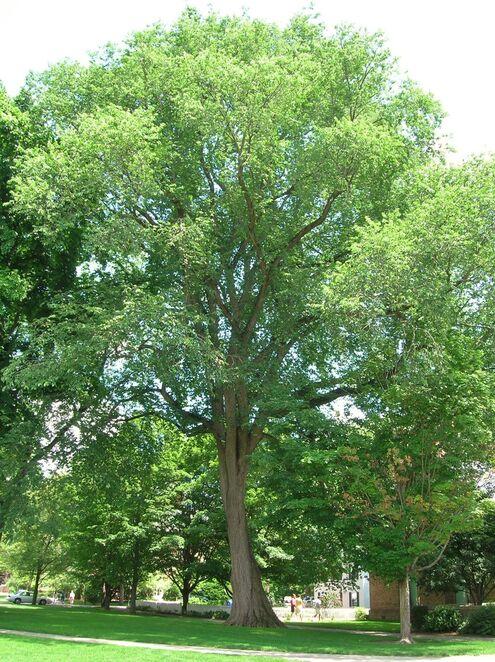American Elm Plant
The American Elm (Ulmus americana) is a fast-growing tree, reaching 60-80 feet tall, and thrives in USDA zones 2-9. It prefers moist, well-drained soil and can grow in full sun to partial shade. The tree has medium moisture needs and is known for its medicinal uses, although it is not edible. Its iconic vase shape makes it a popular choice for urban settings.

Habit
Tree
Height
60-80 ft
Growth
Fast
Soil
Moist, well-drained
Shade
Full sun, partial shade
Moisture
Medium
Edible
No
Medicinal
Yes
Origin
Northern America
Climatic Condition
Temperate
Temperature (°)
10-30
Humidity (%)
60-70%
Potting media
Loamy Soil
Fertilizers
Balanced NPK(10:10:10)
Watering
Regular Watering
Plant Weight
5-7 kg
Flowering Time
Spring
Soil Ph level
6.0-7.5
Water Ph level
6.0-7.5
Soil EC
1.0dS/m
Yield Per Plant
Low Yield
NPK ratio
10:10:10
life Span
50-100 yrs
Health Benefits
Suggested Grow Media or Potting Mix ?
60% loam, 20% sand, 20% compost
Suggested Fertigation/Fertilizers
Fertilize in early spring with a slow-release tree fertilizer.
Common Diseases and Remedies
Wilting, yellowing leaves, and dieback of branches; brown streaks in the wood beneath the bark.
Prune infected branches, improve tree health with proper watering and fertilization, apply beneficial nematodes.
Inject systemic fungicides containing thiabendazole or propiconazole.
HEALTH BENEFITS
American elm (Ulmus americana) has been historically used for its medicinal properties, although it is more commonly appreciated for its role in landscaping. Its bark, leaves, and inner wood have been utilized in herbal medicine, particularly by Indigenous people. Some potential health benefits of American elm include:
- Anti-inflammatory properties: The inner bark of the American elm has traditionally been used to treat inflammation. It may help reduce swelling and pain associated with conditions like arthritis.
- Respiratory support: Elm bark has been used to soothe sore throats, coughs, and other respiratory ailments. It is thought to have demulcent properties, meaning it can form a soothing layer over irritated tissues.
- Digestive health: Elm is sometimes used as a mild laxative and to soothe digestive issues like diarrhea or gastrointestinal inflammation.
- Skin healing: The bark is sometimes applied topically to help with skin irritations, burns, or wounds due to its anti-inflammatory and soothing properties.
- Rich in nutrients: The tree’s leaves and bark contain mucilage, which is beneficial for hydration and soothing internal and external tissues.
However, it’s important to note that while these benefits have been suggested in traditional medicine, there is limited scientific research to support them thoroughly. As with any herbal remedy, it's crucial to consult a healthcare provider before using American elm, especially for medicinal purposes.

